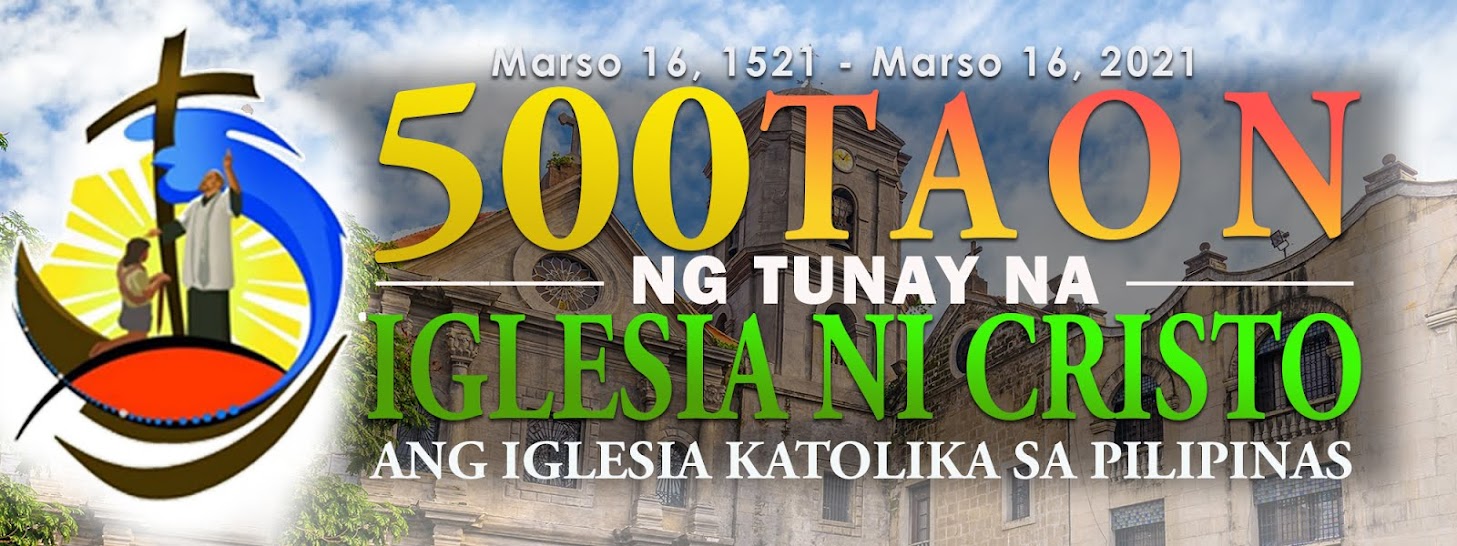Ang DIYOS AY IISA!
Ang doktrina ng tunay na Iglesia ni Cristo - ang Iglesia Katolika - ay may IISANG DIYOS ngunit SIYA rin ay may TATLONG PERSONA - Ang AMA, ang ANAK at ang BANAL NA ESPIRITU.
Ito ang tinatawag nating DOKTRINA NG BANAL NA TRINIDAD o sangtatlo.
Ano ang TRINIDAD?
Narito ang payak, at direct to the point na kaalaman tungkol sa ating doktrina bilang mga Kristiano. (Source: ThoughtCo)
What Is Trinity Sunday?
Honoring the Most Fundament Christian Belief
Ang doktrina ng tunay na Iglesia ni Cristo - ang Iglesia Katolika - ay may IISANG DIYOS ngunit SIYA rin ay may TATLONG PERSONA - Ang AMA, ang ANAK at ang BANAL NA ESPIRITU.
Ito ang tinatawag nating DOKTRINA NG BANAL NA TRINIDAD o sangtatlo.
Ano ang TRINIDAD?
Narito ang payak, at direct to the point na kaalaman tungkol sa ating doktrina bilang mga Kristiano. (Source: ThoughtCo)
What Is Trinity Sunday?
Honoring the Most Fundament Christian Belief
| The Hospitality of Abraham (Old Testament Trinity), c. 1380. Found in the collection of the Benaki Museum, Athens. Photo by Fine Art Images/Heritage Images/Getty Images |
Updated May 11, 2017
Trinity Sunday is a moveable feast celebrated a week after Pentecost Sunday. Also known as Holy Trinity Sunday, Trinity Sunday honors the most fundamental of Christian beliefs—belief in the Holy Trinity. The human mind can never fully understand the mystery of the Trinity, but we can sum it up in the following formula: God is three Persons in one Nature. There is only one God, and the three Persons of God—the Father, the Son, and the Holy Spirit—are all equally God, and They cannot be divided.
QUICK FACTS ABOUT TRINITY SUNDAY
- Date: The Sunday after Pentecost Sunday. See When Is Trinity Sunday? for the date in this and future years.
- Type of Feast: Solemnity.
- Readings (Year A): Exodus 34:4B-6, 8-9; Daniel 3:52, 53, 54, 55, 56; 2 Corinthians 13:11-13; John 3:16-18 (full text here)
- Readings (Year B): Deuteronomy 4:32-34, 39-40; Psalm 33:4-5, 6-9, 18-19, 20-22; Romans 8:14-17; Matthew 28:16-20
- Readings (Year C): Proverbs 8:22-31; Psalm 8:4-5, 6-7, 8-9; Romans 5:1-5; John 16:12-15
- Prayers: The Sign of the Cross; The Glory Be; The Athanasian Creed
- Other Names for the Feast: The Solemnity of the Most Holy Trinity, Holy Trinity Sunday
THE HISTORY OF TRINITY SUNDAY
As Fr. John Hardon points out in his Modern Catholic Dictionary, the origins of the celebration of Trinity Sunday go all they way back to the Arian heresy of the fourth century. Arius, a Catholic priest, believed that Jesus Christ was a created being rather than God.
In denying the divinity of Christ, Arius denied that there are three Persons in God. Arius' chief opponent, Athanasius, upheld the orthodox doctrine that there are three Persons in one God, and the orthodox view prevailed at the Council of Nicaea, from which we get the Nicene Creed, recited in most Christian churches every Sunday.
(The Council of Nicaea also gives us a wonderful example of how a real bishop deals with a heretic: Confronted with Arius' blasphemous views, Saint Nicholas of Myra—the man best known today as Santa Claus—marched across the council floor and slapped Arius across the face. See the biography of Saint Nicholas of Myra for the whole story.)
To stress the doctrine of the Trinity, other Fathers of the Church, such as St. Ephrem the Syrian, composed prayers and hymns that were recited in the Church's liturgies and on Sundays as part of the Divine Office, the official prayer of the Church. Eventually, a special version of this office began to be celebrated on the Sunday after Pentecost, and the Church in England, at the request of St. Thomas à Becket (1118-70), was granted permission to celebrate Trinity Sunday. The celebration of Trinity Sunday was extended to the entire Church by Pope John XXII (1316-34).
For many centuries, the Athanasian Creed, traditionally ascribed to Saint Athanasius, was recited at Mass on Trinity Sunday. While seldom read today, this beautiful and theologically rich exposition of the doctrine of the Holy Trinity can be read privately or recited with your family on Trinity Sunday to revive this ancient tradition.
Para sa komprehensibong kaalaman sa DOKTRINA ng BANAL NA SANGTATLO, basahin dito sa OPISYAL NA KETEKISMO ng tunay na Iglesia ni Cristo.

No comments:
Post a Comment